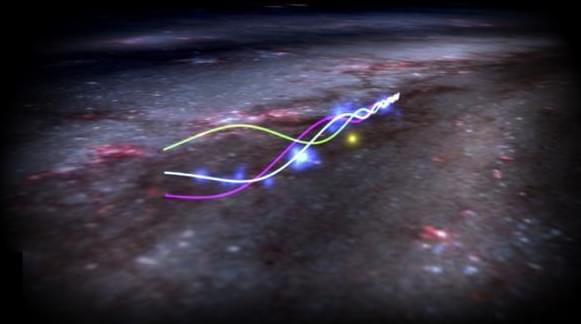“It’s the largest coherent structure that we know of, and it’s really, really close to us,” said study co-author, Dr. Catherine Zucker.
A recent study published in Nature investigates further evidence that a gaseous cloud both looks and behaves like an oscillating ocean wave, giving birth to new stars as it traverses the Milky Way Galaxy, which has since been dubbed the Radcliffe Wave. This study was conducted by an international team of researchers led by the Center for Astrophysics | Harvard & Smithsonian and holds the potential to help astronomers better understand the beautiful and fascinating aspects of our cosmos.
Image obtained from an animation of the Radcliffe Wave with our Sun (yellow dot). (Credit: Ralf Konietzka, Alyssa Goodman, and WorldWide Telescope)
This study builds on a 2020 study used data from the European Space Agency’s Gaia mission to build a 3D dust map demonstrating that the Radcliffe Wave was there, but the data proved inconclusive pertaining to the movement of the dust cloud. The Radcliffe Wave is approximately 500 light-years from Earth and stretches 9,000 light-years across, making it an ideal target for astronomers to examine. For this most recent study, the team used updated Gaia data to build new 3D maps that demonstrated the Radcliffe Wave both looks and moves like a wave.










Comments are closed.